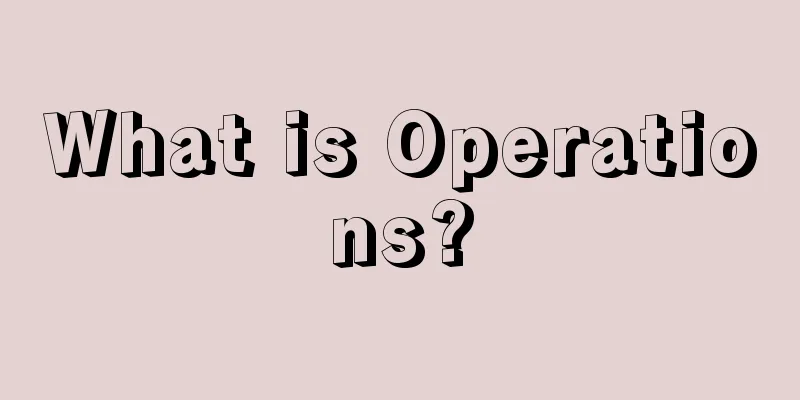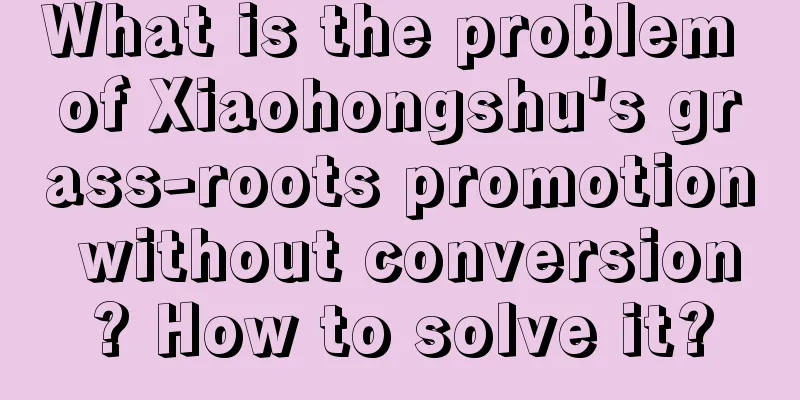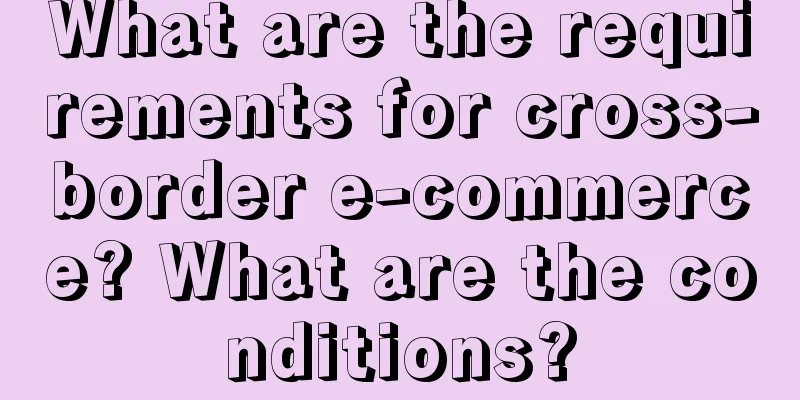What is Operations?

Excerpted from the first section of the first article of "Self-cultivation for New Operations Personnel". Adam Smith has two views on "division of labor" in "The Wealth of Nations":
Looking back at the history of the Internet, operations positions have become increasingly important in the current Internet environment. The fact that operations positions have been able to survive from their birth to their long-term existence proves that they have optimized the division of labor of Internet companies in the current environment and brought incremental value to companies. The position of operations is quite special. Unlike product managers, it is not possible to find corresponding positions in traditional manufacturing and retail industries before the birth of the Internet (in 1926, the first product manager in history was born in Procter & Gamble. His name was Mike Ellroy, who was responsible for the brand positioning, marketing and sales of Camère soap). Operations is a position that only appeared after the birth of the Internet, and it exists because of the Internet. The word "operation" has always been a verb before the emergence of Internet operation positions, representing the systematic operation and management of a certain object. For example, website operation did not represent a certain position at the beginning, but a series of operations such as updating and maintaining website content, maintaining website servers, optimizing website processes, data mining and analysis, user research management, website marketing planning, etc. In the traditional retail industry, a product generally goes through four processes, namely demand, production, sales and after-sales, from demand research to end-user use. In the early days of the Internet, users' Internet terminals were mainly PCs, so for users, products were websites. In the beginning, due to the lack of information on the Internet, websites did not require much operation to be quickly discovered by netizens. As the number of websites increased, supply exceeded demand, so the position of operation was born, which was responsible for promoting and operating products to acquire more users and create more commercial value. This "product" has evolved from a website at the beginning to an APP, a small program, and even a public account and an online store in the mobile Internet era. The product is changing, but the essence of operation has not changed. Therefore, the operation position has flourished with the rapid evolution of the Internet. From the development history of operations, we can find that operations positions have two core objects, one is the product and the other is the user. Some senior people in the industry have given many definitions of "operations". Huang Youcan said, "The so-called operation is actually to help the product and users establish a better relationship, and we need to use all the intervention methods." Zhang Liang said, "Any means that can promote products, encourage user usage, and improve user awareness are operations." Han Xu said, "Operation is a series of actions around users, content, brands, etc., in order to achieve a better connection between users and products and achieve the ultimate goal of the product." Later, he said, "Operation is manual intervention." What I said above is all correct, but I think it is not specific enough. I would like to talk to you about my own thoughts on this basis. Operations is a position that requires highly quantitative results. In other words, it must meet business indicators. From the perspective of Internet companies' revenue, the goal of operations is the growth of the total commercial value of the overall users. The total user value = user scale × single user value. In the Internet industry context, there are generally four links between users and products, namely contact, cognition, trial, and habit. The link from user contact to user trial is the core link for increasing user scale. The link from user trial to user habit is the core link for improving user value. 1. ContactWhere do users come into contact with our products? The core of contact is "marketing channels". What we need to intervene is how to find more effective "marketing channels" to allow users to come into contact with our products under the limited conditions of marketing budget and user portraits. For example, a women's clothing brand online store, in addition to opening a store on the e-commerce platform, needs to promote its women's clothing products externally. After studying the marketing channels in the market, the operator finally decided to promote it on the "Little Red Book" platform, where the target population matches its own products and the marketing cost is acceptable to itself. 2. CognitionWhat do users think of our products? The core of perception is "product value". What we need to intervene is how to extract the core value of our products and present it to users, given the established marketing platform, so that users can have a clear and precise understanding of the product value of our products. Taking the above-mentioned women's clothing brand online store as an example, after determining to use Xiaohongshu as the channel, the operator extracted the core value of its products as "affordable and high-quality celebrity-style clothes." By constructing relevant brand content such as pictures, copywriting, and videos, users can clearly perceive the product value of the women's clothing brand online store: they can wear the same styles of clothes as their favorite celebrities, at a price that suits their consumption level, and the quality is guaranteed. 3. TryHow can potential users really be converted into our users? The core of the experiment is "user conversion". What we want to intervene is how we can establish a more effective operational conversion strategy to get users to try our products when users have a certain understanding of our products. Taking the above women's clothing brand online store as an example, after users recognize the value of women's clothing brands, they generally have three states, namely, demand, unclear demand and no demand. Users without demand cannot be converted immediately, but if the brand power of the product is strong enough, users will subconsciously retrieve the brand information in their brains when they have demand, thus achieving the final conversion, but this conversion process is generally longer. Users with needs and users with unclear needs are the focus of current conversions. Under the limited conditions of marketing budget, users can be naturally converted through preferential attraction or the attractiveness of the product itself. 4. HabitsHow can we make users continue to use our products? The core of habit is "user management". What we need to intervene is how to establish a more effective user operation strategy after users have initially used our products to make old users continue to use our products. Taking the above-mentioned women's clothing brand online store as an example, we need to identify a typical women's clothing buyer, their purchase frequency and the average order value under the current product matrix constraints. For low frequency, we stimulate user demand and increase user frequency through a combination of promotional discounts, push recalls, etc. For low average order value, we encourage users to increase their unit price and increase their average order value through a combination of package packaging, discounts for purchases above a certain amount, etc. After a series of operational strategies are implemented, we establish users' consumption habits on our products and continue to make profits from them. Seeing this, some students may be confused. Isn’t the process from user contact to cognition the job of marketing or brand students? This is a good question. I personally believe that the entire process of brand building for marketing/brand colleagues to reach out to users and establish brand awareness among users of their products is centered around letting users understand the value of our products, developing awareness of our products, and building trust with users. It does not conflict with operational work. In certain scenarios, a product's brand power or users' awareness of the product often becomes an efficiency amplifier for increasing user scale. Therefore, marketing/branding work and operations work complement each other. During this operation process, what needs to be paid more attention to is its impact on customer acquisition efficiency and user value improvement. Based on the above description, I think the essence of "operation" is: under specific constraints, through a series of combined means, to intervene in the entire chain of users from contact, cognition, trial to habit of the product, and to enhance the total value of users in the product. Only by recognizing the essence of operations can we do a better job of operations. Pay attention
Author: Biluo Source: WeChat public account "Operation Meditations (ID: yunyingcsl)" |
>>: The red envelope war is over, and the Spring Festival prime time is becoming a waste?
Recommend
What does Amazon DHL mean? What are the advantages and disadvantages?
In the process of opening a store on Amazon, you w...
What to do if Amazon's new products have no natural traffic? How to deal with it?
After launching new products on Amazon, many merch...
How can traditional brands achieve brand renewal on Xiaohongshu?
This article mainly introduces how traditional bra...
AI-driven overseas expansion: A new driving force for Chinese brands’ overseas expansion
In the wave of globalization, Chinese brands are u...
With the European Cup approaching, can Chinese overseas brands still reap the benefits?
Chinese brands are gradually going abroad and work...
Convenience stores are collaborating, even if Ultraman comes, it won’t work
The IP convenience store cooperative operation mod...
0 cost to build brand
This article starts with the examples of Bailemos ...
As consumers become more aware, all Chinese restaurant operators should see these three changes!
Thirty years in the east, thirty years in the west...
The 24 solar terms are worth revisiting for every brand
Holding an old map, you can't find a new world...
How to write project experience?
The project experience writing template should inc...
Young people have a double standard for pre-prepared meals: they can buy them on their own initiative and refuse to be “fed” by restaurants
Pre-prepared meals have always been a topic of soc...
Non-standard product business in private domain
In this article, the author believes that "pr...
When will Amazon Black Friday 2023 start? How big will the discounts be?
Amazon Black Friday is a promotional event that fo...
After using Xiaohongshu for a month, I have become emo...
As the leading platform for seeding content in Chi...
How do Chinese people buy things on Lazada? How do they shop?
If our domestic friends want to buy things on over...








![E-commerce merchants selling goods on Xiaohongshu [New Front]](/upload/images/67e6f3b28bea1.webp)
